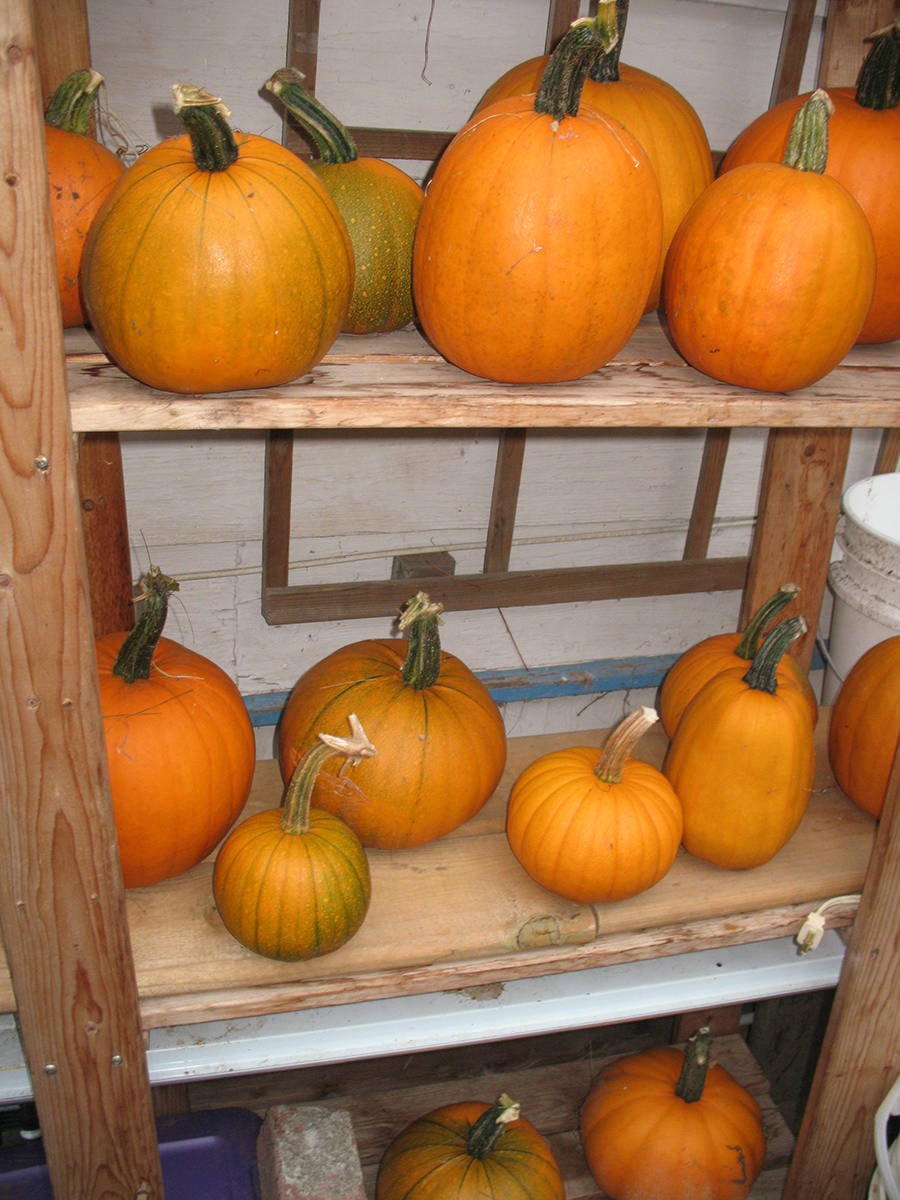By Mary Lowther
Some folks might hesitate to grow winter squash like pumpkins for fear the vines will take over the garden. These can cover a lot of space, but if planted at the edge of the garden they can sprawl over the outside of the bed, along paths or up a fence. I have seen trellises built specifically for squash that hold them overhead, shading a perfect spot to grow lettuce in the heat of the summer.
Keep an eye on those vines though, because they can get away on you. I once had a plant in the backyard of a townhouse that grew luxuriously but never produced a pumpkin. When I finally pulled up the vine in September, I saw it growing under the fence and into my neighbour’s backyard where I discovered my lovely, enormous pumpkin, happily enjoying a quiet day’s photosynthesis. I soon put an end to that!
We can keep vines within bounds by nipping off the growing tips when they look long enough. The energy will then go to the fruit and produce bigger squash. I start nipping the ends of pumpkins early in September, but if I wanted larger ones I would start sooner, once I saw decent looking fruit produced. I also nip off flowers then because no decent sized fruit will grow from them so late in the season; I haven’t tried eating the flowers, but some folks wax eloquent in their culinary descriptions of fried squash flowers.
Winter squash is easy to grow and you get a big bang for your buck. I start mine indoors mid-April and set them outside about three weeks later under a “Wall ‘O Water”, a water-filled protective cover that keeps the plants insulated in early spring. Once the leaves grow out of the top of the protection I lift off the cover and let pumpkin vines sprawl over the paths and grass. Smaller squash, such as acorn and delicata, go at the ends of my corn patch where I encourage them to grow around and amid the stalks, keeping out the varmints. Research and experience suggest that the sharp spiny vines discourage predators. Racoons evidently have tender feet.
A board or a thick layer of straw under each squash as it grows keeps it from rotting on wet ground and deters slugs. I harvested my pumpkins last week and will harvest the small squash this week. Cut them from the vines; don’t pull or twist them off or you might bruise them. Leave a short handle of vine on each squash so it will store better. Pull out the vines, cut them up into short pieces so they’ll rot more easily and toss them onto the compost heap.
Bring the fruit of the squash inside to cure. Place them singly in a sunny spot for two weeks, turning them occasionally so all sides get sun. Wipe them off, coat them with a bit of vegetable oil and store them in a medium/warm place — not in the cold room with the other vegetables. I store mine in boxes under the kitchen table and in corners of the room, adding a “je ne sais quoi” to the ambience. Check them from time to time and see if they need a bit more oil as this helps preserve them. I was eating squash until March last year, but would have run out sooner if David liked it.
Seeds are dead easy to save: scoop them out when you’re going to eat the squash and place the seeds and their pulp into a jar to leave for three or so days. This allows friendly bacteria to secrete lactic acid that kills off any pathogens that might be lurking. Pour the whole works into a bowl, add water and swish this around, scooping off the top mix and draining the good seeds left on the bottom. Dry them for a few days in a cool spot and store them in a cold place. They can last for several years, but I grow mine from last years’ stock each time and every year the plants are better than the last ones.
Please contact mary_lowther@yahoo.ca with questions and suggestions since I need all the help I can get.
